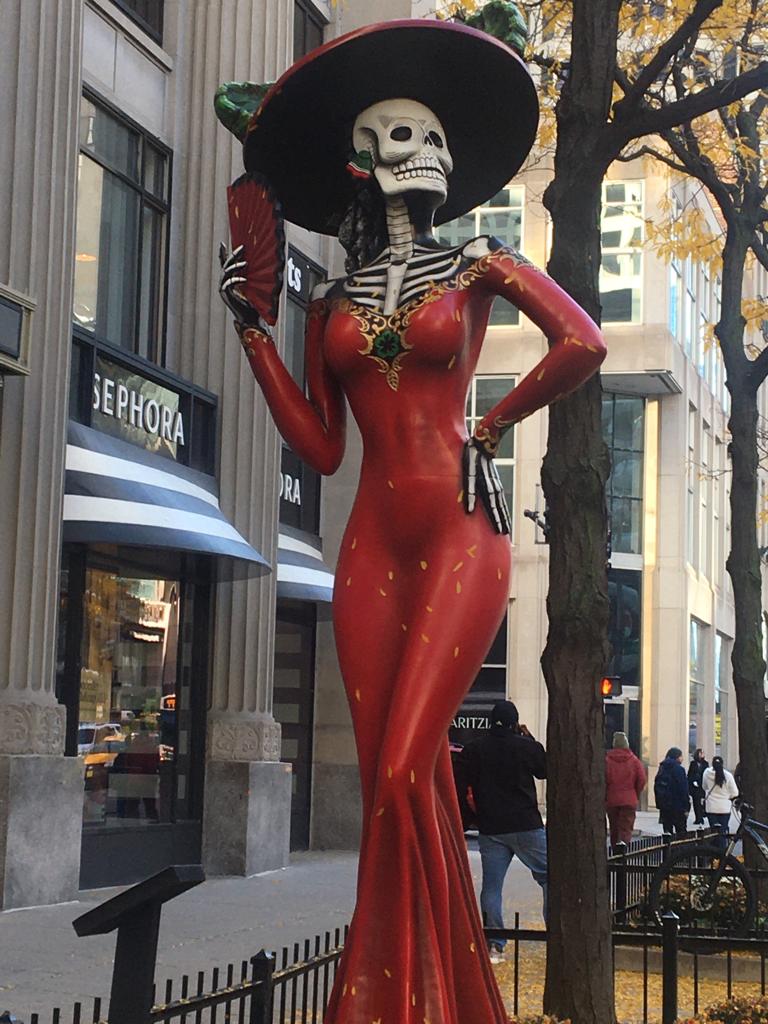
We want to celebrate with our coworkers
from DIFMAQ ROURE MEXICO office, this festivity
declared a World Heritage Site
WHAT IS THE DAY OF THE DEAD AND WHEN IS ITS CELEBRATED?
According to our colleagues at DIFMAQ ROURE Mexico, the Day of the Dead is a celebration of religious origin that takes place in the Mesoamerican region, mainly in Mexico, on the 1st and 2nd of November.
Although some communities extend the rituals for a month, it is also celebrated on the first and second of November.
The celebration, nowadays is a fusion of Catholic and indigenous rituals that consist of veneration of ancestors and the dead.
Due to its unique characteristics, in 2008, it was added to the Intangible Cultural Heritage of Humanity by UNESCO.
ORIGIN OF THE DAY OF THE DEAD
The celebration of the dead and the ancestors is an ancient practice among the indigenous people of central and southern Mexico. Such as the Mayas, Nahuas, Zapotecs and Mixtecs, among others.
After the conquest of America, the indigenous tradition merged with the Christian celebration of All Saints Day on November the 1st and all Souls Day on the 2nd of November.
In the Aboriginal calendar, the dates coincided with the end of the period of scarcity prior to the harvest and the beginning of abundance. Occasion to celebrate the cycle of life. And the new fruits are shared with the ancestors and encourage good harviest in the future.
CHARACTERISTICS OF THE DAY OF THE DEAD
Our workmate Adriana from DIFMAQ ROURE’s Mexico office, explained us the following characteristics of the day of the dead’s celebration:
The day of the dead is festive tradition. Deceased loved ones are expected to visit and return in the form of blessing for the living. Therefore, they are welcomed with feasts and an abudance of food.
Uses and ceremonies vary from region to region. In some regions they take place on the 1st and 2nd of November. In others, they begin in the last week of October and continue throughout November.
In some communities they divide the ceremonies according to the category of the deceased:
- The 28th of October is the day of the dead in accidents.
- The 30th of October is the day of the children who died without being baptized.
- The 1st of November is the day of the “little dead”, meaning dead children.
- And the 2nd the day of the great dead, in other words, the adults.
It is customary to place offerings arrange graves, hold cementery vigils and hold religious services.
Characteristic are the ephemeral architectural constructions, such as arches and altars decorated with the campoalxochitl or cempasúchil flower.
An altar, called the “altar of the dead”, is ususally set up, where photos of the deceased are placed, regards and they realize gifts.
The gifts / offerings are a fundamental element, both in private and public sphere. They consist of flowers, sugar skulls, “pan de muerto”, religious images or the meals emjoyed by the relatives to whom the ofrenda is dedicated.
UNESCO’S INTANGIBLE CULTURAL HERITAGE
Inscribed in 2008 (3COM) on the representative List of the Intangible Cultural Heritage of Humanity (originally proclaimed in 2003).
The United Nations Educational Scientific and Cultural Organisation (UNESCO) created an instrument to support multiple cultural initiatives at the international level.
🌐 If you want to know more about The Death Day or other festivities, visit the Mexican government’s website
🌐 If you want to know where you can find representatives of DIFMAQ ROURE in the world visit our website










